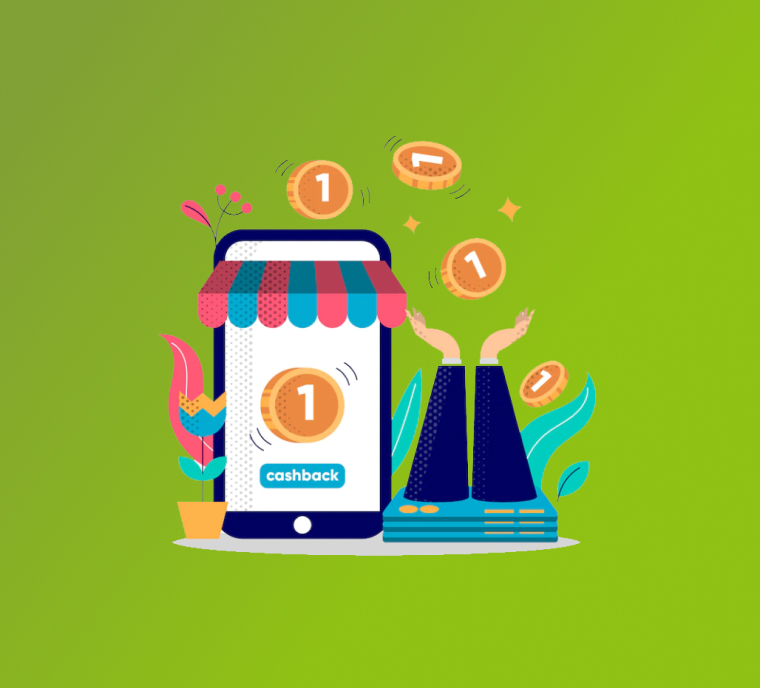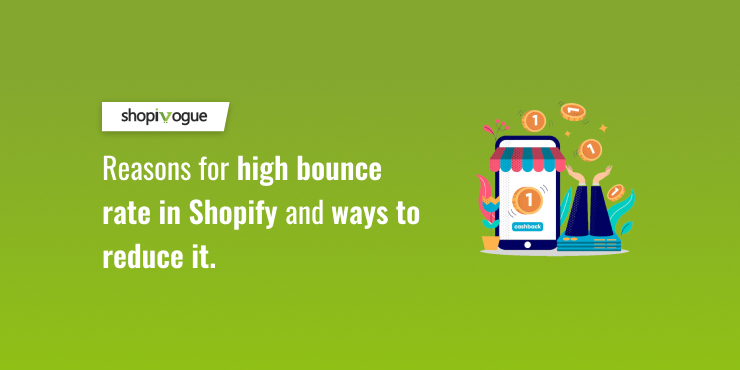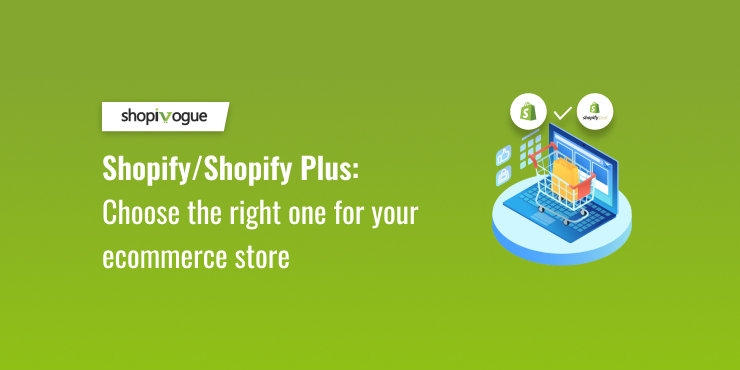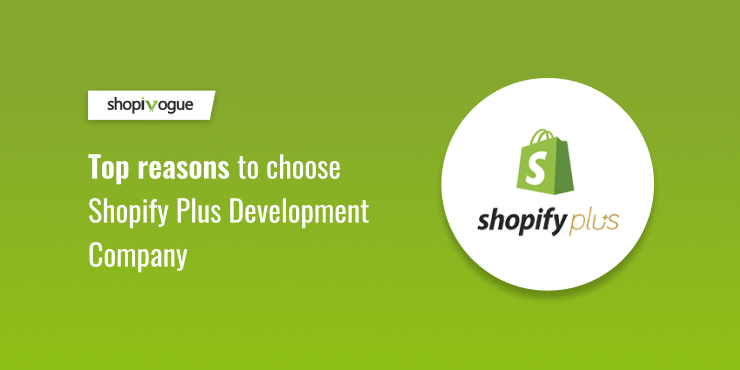An ecommerce store owner knows how much effort is made to attract customers and generate traffic for an online store. Several aspects, such as SEO, advertising, social media, and other measures, are taken to improve website engagement. But why do people often leave your site, without making a purchase? The increasing bounce rate is Shopify, which directly impacts your sales.
It clearly defines that they are not interested in buying from you. But what when a large number of visitors does this? Google gets notified when a huge number of users have these notices problems on your websites.
These Shopify factors determine the overall shopping experience of a Shopify store and impact your organic ranking.
A Shopify bounce rate report by Littledata for 3244 Shopify store owners shows that the average bounce rate from a Google search is 41.1%, but when it extends by 57.6%, it becomes the worst performance of the store.
What is the bounce rate in Shopify?
Shopify bounce rate is the percentage of visitors that landed on a website but soon left without taking action. It is conducted by the percentage of users who viewed more than one page but left directly from the start page.
Generally, the bounce rate Shopify is calculated by using this formula:
Rate = Number of single page visits/the total number of visitors.
The Shopify bounce rates are calculated for certain reasons,
- The session timed-out as the user didn’t take any action.
- The user pressed the “Back” button knowingly or unknowingly to return to the result page.
- A new URL is entered in the address bar, or the user opens from the bookmarks.
- Closing of the browser or window by the user.
We have sorted out some reasons for high bounce rates in Shopify and tips to fix them!
What are the reasons for high bounce rates in Shopify?
Improper Navigation
Poor navigation is the biggest pain point in Shopify bounce rate reduction. It turns into real problem for thousands of product sellers, as the customers don’t stay more if they don’t find anything relevant they are looking for.
No CTAs
Every ecommerce store owner should have a motive for making CTA’s that are clicked by visitors as much as possible. If you are at the stage of website design that you forget to include CTAs, you may make them purchase as they would land on your website and leave just for another site.
Issues in checkout
If your store designs are impressive, all the lists and products are at the place where required and the navigation is also leading the customers to the desired product page, but still, it’s not one. If your store have a complex shopping cart and checkout, you still have to deal with Shopify conversion optimization.
Login for purchase
When you keep mandatory registration to obtain additional information about your leads and customers to make them accessed the product catalog, it creates a negative impact on customers and some of them leave as they think it’s time-consuming.
Lack of customer support
The difference between an online and offline store is getting answers to queries immediately. If you wish your customer on your website doesn’t bounce back, you have to organize the online sales and support so that the buyer doesn’t feel any difference between on-site and in-store.
Inadequacy in providing shipping costs and terms
Your store might have delivery and payment terms sections in one place but the customer needs to find it by leaving the current page and navigating to find full store information. They have finalized the product, and you don’t want to leave them, but if they realize that you are charged too many charges than expected, a higher Shopify bounce rate is experienced.
Not-so-attractive design
If your Shopify store is not mobile-friendly, it becomes the main reason for higher ecommerce bounce rates. That means you are losing a potential customer who will likely leave the website once they enter it from their mobile phones.
Slow website loading speed
Slow website loading is the most common reason for the high Shopify bounce rate. If the site is low, the visitors might switch to another website in no time. As recommended by marketing experts, the loading speed of any website should be close to or less than a second.
Do you want to know more about reducing high bounce rates?
Get in Touch
What are the tips to reduce bounce rates in Shopify?
Optimizing website content
Your content’s quality can make or break your visitors; hence it is essential to keep updated website content that is fresh and SEO optimized. Everything you post should be clear, understandable, engaging, and relevant to attract target audience. Use relevant keywords that play a lead role in content marketing and generates positive leads.
Creating outstanding CTA
Your CTA’s make the visitors take the relevant action. The CTA should be clear, simple, and punchy. It is important to use tempting and creative call-to-action by trying all the latest hacks to convert visitors. However, it does not beat clarity. Most visitors decides whether to continue on-site within seconds of landing on it. You must add CTA to your landing page to avoid leaving the site.
Smooth design and navigation
Your site experience depends on the elements, tools, and processes you use to create a well-structured UX. The sum of information and interaction beyond certain expectations gives success to sites. A search box with autocomplete, faceted search, a wide footer, and colorful animation are just a few of the many tried-and-true navigation tactics that can help you maintain a low Shopify bounce rate.
Increase in site speed
In ecommerce, having a good site speed, i.e., a site that takes a load time of less than a second, changes the entire game. The faster your page loads, the better prospects it receives. Use relevant tools to evaluate the current page speed and remove query strings from the static page. Try to optimize images with the wordpress plugin.
Create a new tab for external links
Make sure that whenever a user clicks on your website link, it opens in a new tab or window; this lessens back button exhaustions. This is completely another step for optimizing user experience. Think that you are a guest on your website and how you will look at various products and pieces of content by switching to tabs and windows.
Engage visitors through videos and podcasts
The most powerful tool to reduce bounce rates in Shopify and increase conversion rates is videos made from power tools. Videos are way more powerful than GIFS and text on still images. It greatly impacts your brand’s image and brings out your customer’s emotional linkups with you as they become loyal buyers. Podcast are those audio clips that make your content more dynamic and gives a way to engage with brands.
Final thoughts
Whatever your industry is, you want to aim for a low bounce rate in Shopify. The more your visitors stay on your website, the length is the possibility that they will stick around and become ultimate customers. The main aspect of ecommerce bounce rate is conversion rate optimization. Start identifying problems and opportunities and maintain a healthy relation with your customers. ShopiVogue team have expertise in optimizing ecommerce store and uses best strategies and tools to reduce bounce rates in Shopify. We are always ready to implement a strategy that would improve your store. If you are interested in knowing more, contact us!





